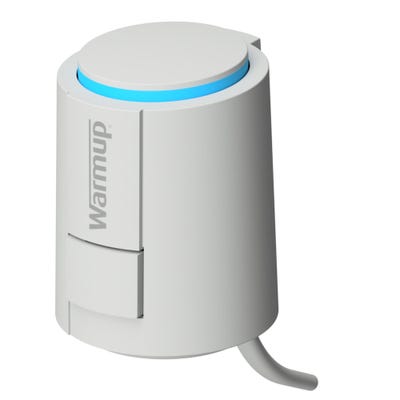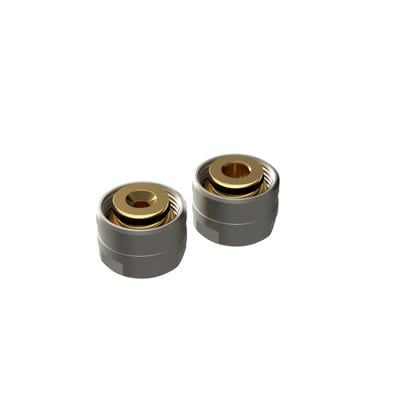Water Underfloor Heating
Give your home an upgrade with a water underfloor heating system from trusted brands like Warmup. Suitable for both new builds and renovations, our wet underfloor heating range will deliver energy efficient, even heat throughout your property. We stock a wide selection of components and accessories, including manifolds, pipes, valves and actuators, so you have everything you need for a smooth installation. With low-profile wet underfloor heating options available for projects with limited floor height, our product lineup suits both trade professionals and confident DIYers. Shop online at Builder Depot today for quality products at competitive prices.
Read More Read LessWhat is wet underfloor heating?
Wet underfloor heating is a system that uses a network of pipes beneath the floor to circulate warm water, heating the room from the floor up. Unlike traditional radiators, which create hot spots and cooler areas, underfloor heating provides consistent warmth across the entire floor surface.
This means all areas in a room become warm, so you won’t need to huddle near a radiator in the colder months! Wet underfloor heating can be installed in concrete screeds or between timber joists, and is compatible with most floor coverings like tile, vinyl, and engineered wood.
This type of heating is commonly used on the ground level of a building as it’s easier to embed the pipework into a solid concrete screed or an insulated subfloor.
How to install water underfloor heating
- Plan the layout
- First, you need to plan the layout of your underfloor heating system. This means carefully measuring each room to determine the best way to run the pipes. The layout should ensure even heat distribution throughout the space, so it’s important to think about pipe spacing and how many heating zones you want. Zones allow you to control the temperature of different areas separately, which can save energy and improve comfort. You’ll also need to consider where the manifold (the control centre of the system) will be placed, ideally in an accessible location.
- Lay insulation boards
- Next, insulation boards are laid down across the entire floor area. This step is important because it prevents heat from escaping downwards into the subfloor. The insulation helps push the heat upwards into your living space, making the system more efficient and reducing running costs. The type and thickness of insulation can vary, but it should always meet building regulations and be suitable for use with underfloor heating systems.
- Install the pipework
- Once the insulation is in place, the pipework for the heating system is fitted. Flexible plastic pipes are laid out in loops and secured to the insulation using clips, rails, or specially designed fixing panels. The pipe pattern is chosen to ensure an even spread of heat. It’s important that the pipework is installed carefully, with the correct spacing and without any sharp bends, to avoid flow issues later on. Pipe bend supports can be added to minimise pipe damage and enhance water flow.
- Connect to the manifold
- After the pipes are laid, they must be connected to the manifold. The manifold is a central unit that distributes warm water from your heat source (like a boiler or heat pump) into each pipe loop. It also controls the flow rate and temperature of each zone, and some manifolds include gauges and actuators for more advanced control (like in the Warmup range). This connection is a key part of the system, so it needs to be done precisely. Getting a professional installer can be helpful, as underfloor heating can be tricky to install for DIY beginners.
- Pressure test the system
- Before covering the pipes, the system must be pressure tested. This involves filling the pipes with water and checking for leaks. The test is usually done at a higher pressure than normal operating levels to make sure the system is completely sealed and safe to use. This protects your flooring and ensures the heating system won’t develop leaks once it’s been enclosed.
- Install the floor covering
- Finally, the floor covering is laid over the top of the pipework. In most installations, a layer of screed is poured over the pipes to embed them in place. The screed must fully cure before the heating system is turned on. In timber or suspended floors, the pipes may be set into grooved panels or covered with dry boards instead. Once the flooring is installed, the system is ready to be commissioned.
How does water underfloor heating work?
Underfloor heating systems connect to your central heating or a dedicated heat source like a boiler or heat pump. Warm water flows through flexible pipes laid under the floor, gently heating the surface above. As heat rises, it warms the room. A thermostat regulates the temperature, and multiple zones can be controlled independently for added energy savings.
How long does water underfloor heating take to warm up?
Water underfloor heating takes longer to warm up rooms than radiators. Usually between 1 to 3 hours depending on the floor type, insulation, and pipe layout. However, once the heating system reaches temperature, it retains heat well and keeps the room comfortable for longer, reducing the need for frequent on and off cycles.
Is wet underfloor heating expensive to run?
Despite the upfront installation cost, wet underfloor heating is energy efficient and can be cheaper in the long run. This is because it operates at lower temperatures than radiators, using less energy to achieve the same level of comfort (temperature-wise).
Zoning controls and smart thermostats can also help reduce running costs as they prevent overheating, or heating rooms that are not in use.
What insulation do I need for wet underfloor heating?
Insulation is key to getting the best performance from your wet underfloor heating system. Rigid insulation boards, like PIR or EPS, are typically installed beneath the pipework to reflect heat upwards and prevent loss into the subfloor.
The type and thickness of insulation you need depends on your project. Generally, the higher the insulation value (U-value), the more efficient your heating system will be.
Edge insulation is also added around the perimeter to allow for floor expansion and to retain heat.
Is water underfloor heating worth it?
For many homes, especially new builds and major renovations, wet underfloor heating is definitely worth considering. This type of heating offers better heat distribution in rooms, improved comfort, and greater efficiency compared to radiators.
It also frees up wall space by eliminating the need for radiators, which can give rooms a more open and aesthetic look. This can increase the visual appeal and value of your property.
While the installation cost of wet UFH is higher than electric underfloor heating, the long-term savings and comfort benefits make it a smart investment for many households.















